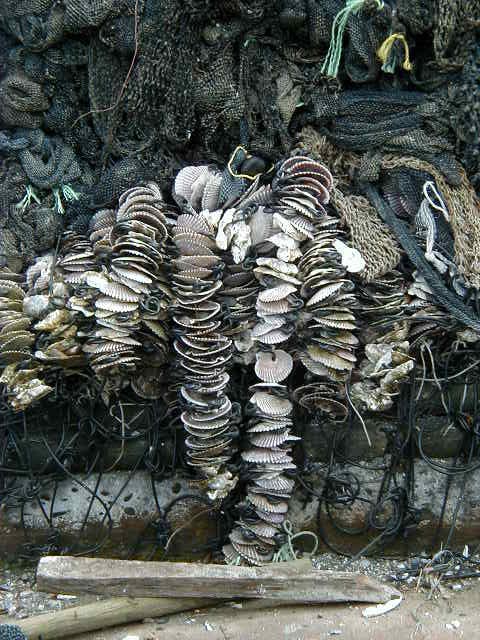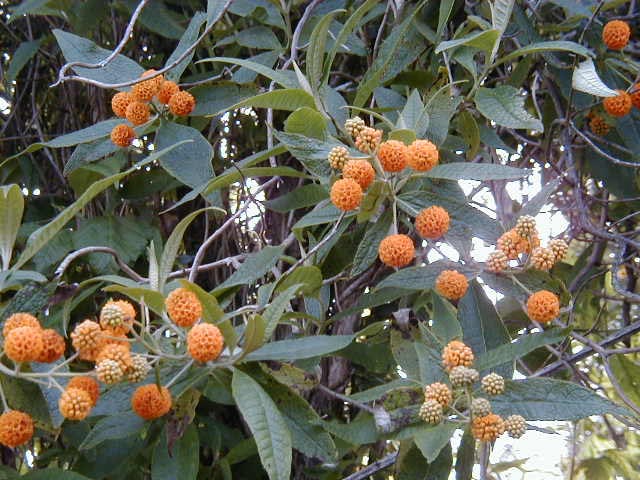
Backing the bus onto the ferry.

Back at the hotel after the day’s excursions.
The morning walk was on another island adjacent to Chiloé called Quinchao. We drove south from Ancud while Charlie discussed the geography and geology. Chiloé is an extension of the coastal range and the Gulf of Ancud was covered in rain forests until the sea level rose and flooded the valley making Puerto Montt a Puerto rather than an inland town.
To get to Quinchao, we boarded a ferry at Dalcahue. Because of the slope of the landing we disembarked from the bus while Luis the bus driver backed the bus onto the ferry. After about a 15 minutes crossing, we walked off the ferry and Luis drove the bus off, and we reboarded.
After a short drive down the highway, we were let off at another gravel country road which lead us towards the coast. At one point, there was an overlook that gave us a view of the channel between Quinchao and Chiloé. The channel had a couple of aquaculture farms, one for salmon and one for oysters and mussels. The salmon start in the mountains for their freshwater phase before being shipped to the saltwater sites where they grow to maturity. (We saw a number of the freshwater sites on the shoulders of Calbuco.)
The path descended steeply to the water, then followed the waterfront.
One plant along the way had yellow flowers like a pom-pom called a matico. Ingrid said that the plant had medicinal use as a wound healer.

Matico flowers (Buddleja globosa) - the leaves are used for wound healing, the flowers to make a yellow dye.
Along the path we took was a small water mill. The interesting thing about the water wheel was that is was horizontal and as a result required no gears to shift the axis of rotation to facilitate the grinding stones in the shed above.
Continuing on the road we came to a facility that was running the oyster farm in the channel. Charlie asked the custodian if we could go in for a look and he agreed. The tanks where they seed the shellfish were empty at that time. Out in the channel, the oyster farm looked like a series of floats set out in a tight grid. Dangling from these floats is a string of medium that supports (i.e. provides a physical support) for the oyster to attach itself to. The medium they used were scallop shells strung together like a necklace. They also had box-like netting constructs that they used to grow abalone.
As we approached the village of Curaco de Vélez, we followed a path along the beach to the settlement. Charlie led us through and around town to see the houses in what used to be a major whaling village.
We boarded the bus in the village and proceeded back to the main island and the city of Castro for lunch. The main course was a whitefish filet stuffed with cheese, tomato, and sausage – very nice. Towards the end of the meal, an accordion player arrived to serenade us and the rest of the patrons. When the dance tunes started Olga and Janice jumped right in joined by a good natured Chilean lady at the next table.
The afternoon was spent walking around the streets of Castro. Ingrid bought a stalk of gunnera outside a soccer game and cut it up for us to sample. Not as tart as rhubarb with a woodier texture – an acquired taste I think. Ingrid offered the rest of the stalk to a couple of kids in the park, who tore into it with enthusiasm.
In the main square was the local church. The architect who drew up the plans designed it to built in stone, however, stone was a scarce commodity and wood was plentiful. So they built it out of wood giving it a warm airy feeling absent in the stone cathedrals of Europe.
From there we went to the local crafts fair. A lot of stuff, sort of interesting, but nothing sang to me.
We returned to the hotel for dinner. The meal was the Chilean version of a clambake that included sausages, chicken, and pork along with clams and mussels. A tremendous amount of food. This version was cooked stovetop in a single pot.
The hotel had arranged for some local musicians to perform for us and another touring group in the hotel’s restaurant. It was quite lively and when the dancing started, the troupe invited individuals to join them. To my surprise, Jonathan even got up to take a turn. I had to ask Lavon and Susan to take a snapshot for me as my camera was back in the room.